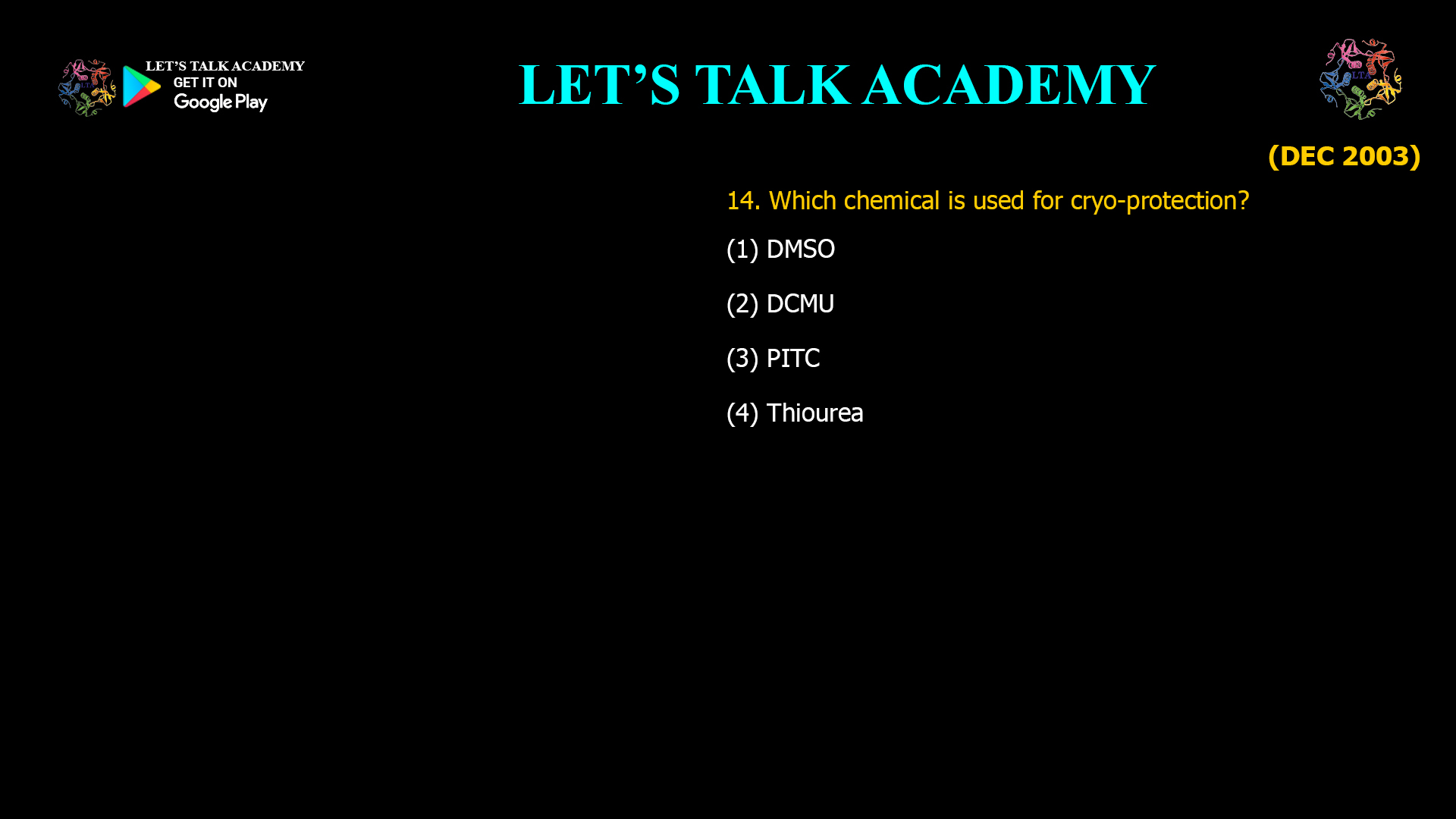- Which chemical is used for cryo-protection?
(1) DMSO (2) DCMU
(3) PITC (4) ThioureaWhat Is Cryo-Protection?
Cryo-protection refers to the process of safeguarding biological samples from damage during freezing and thawing. When water inside cells freezes, it forms ice crystals that can rupture cell membranes and disrupt cellular structures, leading to cell death. Cryoprotective agents are added to freezing media to prevent or minimize this damage, ensuring high post-thaw viability.
DMSO: The Gold Standard in Cryo-Protection
How DMSO Works
-
Ice Crystal Inhibition: DMSO readily penetrates cell membranes and replaces some of the water inside and outside the cell. By doing so, it lowers the freezing point of water and disrupts the formation of ice crystals, which are the primary cause of cellular damage during freezing156.
-
Hydrogen Bonding: DMSO forms hydrogen bonds with water molecules, which helps to stabilize the liquid state and promote vitrification—a glass-like state where water solidifies without forming damaging ice crystals17.
-
Membrane Stabilization: DMSO also stabilizes lipid membranes and cellular proteins, helping to maintain cell structure and function throughout the freeze-thaw cycle56.
Why DMSO Is Preferred
-
Broad Effectiveness: DMSO is effective for a wide range of biological materials, including mammalian cells, stem cells, embryos, and tissues568.
-
Low Toxicity at Proper Concentrations: When used at standard concentrations (typically 5–10%), DMSO offers a good balance between cryoprotective benefits and minimal toxicity56.
-
Reliable Results: Its consistent performance makes DMSO the preferred choice in research laboratories, clinical biobanking, and commercial cell therapy production35.
Scientific Evidence
Numerous studies and decades of practical use have established DMSO as the cornerstone of cryobiology. Research has shown that DMSO prevents ice nucleation, supports vitrification, and maintains high cell viability after thawing1235678.
Other Chemicals and Their Roles
While DMSO is the most common, other chemicals are sometimes used as cryoprotectants or in specialized protocols:
-
Glycerol: Used for certain cell types, especially sperm and red blood cells.
-
Ethylene glycol and propylene glycol: Common in plant and embryo cryopreservation.
-
Sugars (like trehalose): Sometimes added to enhance protection.
However, none of the other options listed—DCMU, PITC, or thiourea—are standard cryoprotectants in biological freezing protocols.
Conclusion: The Correct Chemical for Cryo-Protection
DMSO (Dimethyl sulfoxide) is the chemical most widely used for cryo-protection. Its ability to inhibit ice formation, stabilize cell membranes, and preserve biological integrity during freezing makes it indispensable in cryopreservation protocols across the life sciences125678.
Correct answer:
(1) DMSO -




1 Comment
Kajal
November 6, 2025DMSO